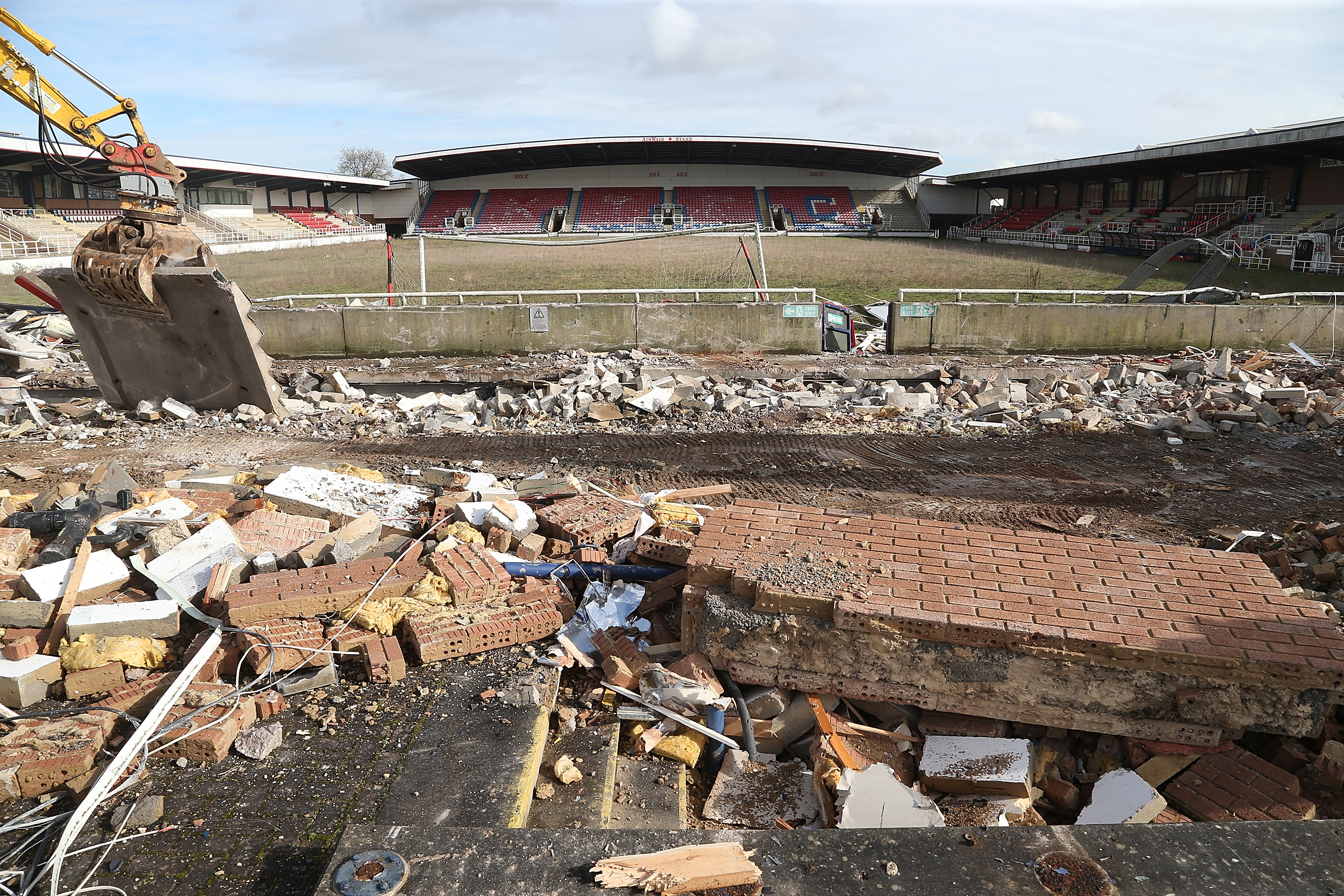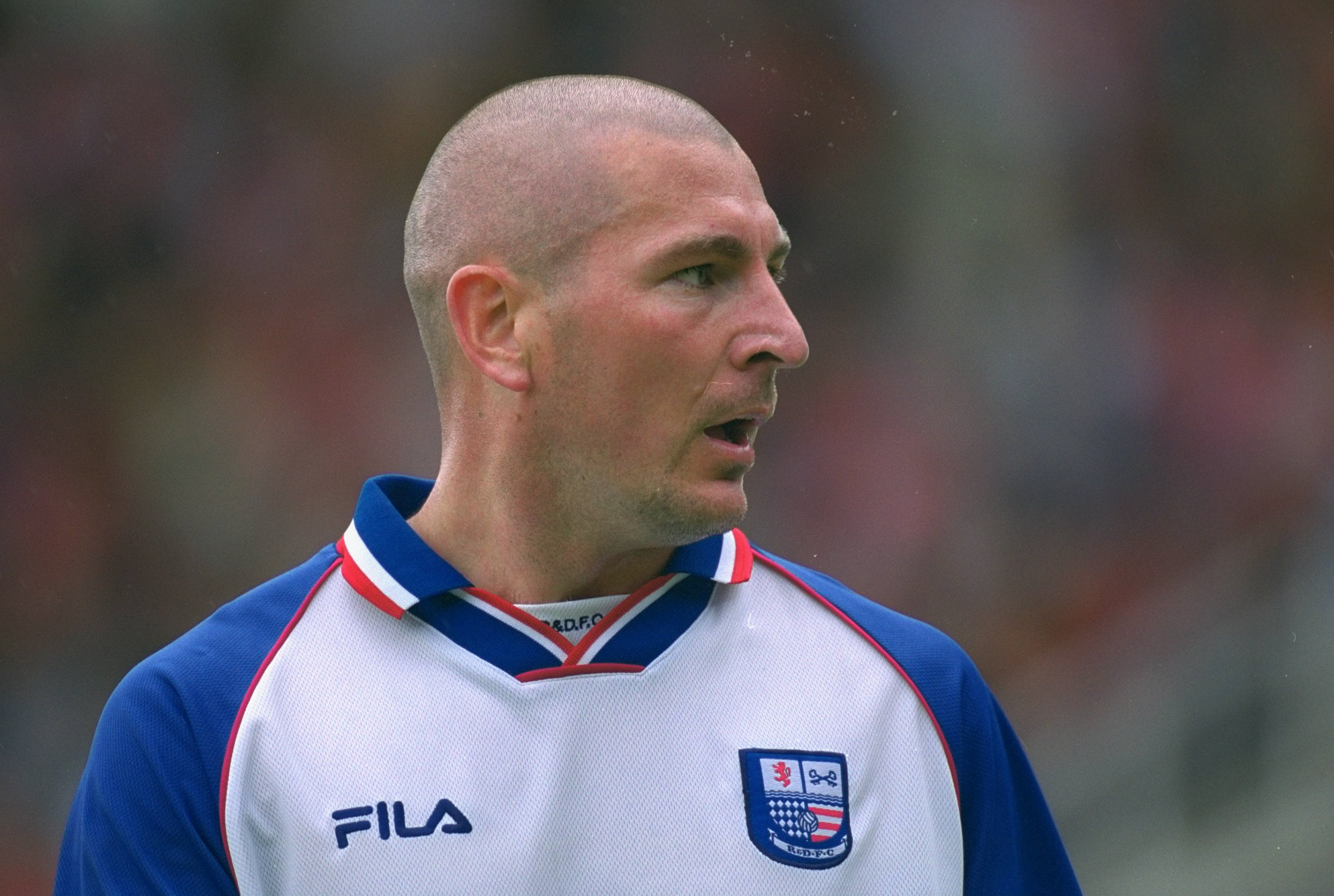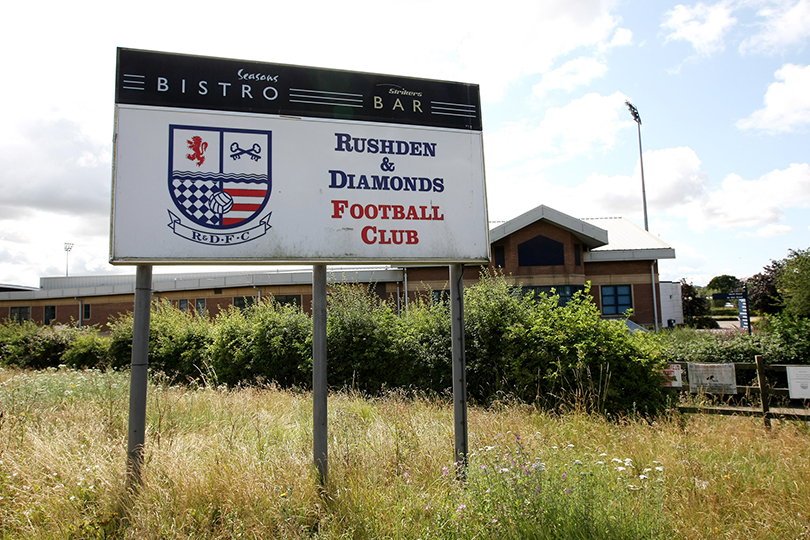Rushden & Diamonds: the club that English football forgot
Based in the tiny town of Irthlingborough, the minnows made it to England’s third tier – then it all went wrong

There were more than 22,000 people inside Hillsborough, and their frustration was obvious at the full-time whistle: Sheffield Wednesday 0, Rushden & Diamonds 0.
Three days later, Rushden won at Blackpool to move into the top half of the third tier after 15 games of the 2003-04 campaign. Below them sat not only the Tangerines but also Luton and Brentford, two sides now in the Premier League.
Since the club’s formation just 11 years earlier, from a merger of Northamptonshire sides Rushden Town and Irthlingborough Diamonds, their momentum had only ever been upwards under owner Max Griggs, the head of footwear company Dr Martens, based nearby.
Despite the club starting in the Southern League Midland Division, the seventh tier of English football, and despite Irthlingborough – home to their Nene Park ground – being a town of just 9,000 people, Griggs’ investment helped the Diamonds climb to the Conference by 1996 and the Football League by 2001.
By then, with their stadium developed into a smart 6,400-capacity home, they’d splurged six-figure fees on key signings: some £100,000 for Duane Darby, followed by £180,000 for Morecambe’s Justin Jackson, a record transfer between two non-league clubs.
Promotion to the fourth tier made Irthlingborough the smallest town to host a Football League club.
“The ground nearly held more people than the town it was in,” says Andy Burgess, who spent nearly a decade as a Diamonds player across two spells. “But it was an unbelievable place to be. A lot of people worked in the Dr Martens factory; it was a real close-knit community who came to the games and supported us.
Get FourFourTwo Newsletter
The best features, fun and footballing quizzes, straight to your inbox every week.

"Max Griggs was a Northamptonshire bloke and it didn’t feel like we had a sugar daddy – he did spend tens of millions, but he was so humble. The training pitches were phenomenal and everything was run brilliantly by the manager, Brian Talbot. It was only a small club, but it was done properly.
“Promotion to the Football League was always the dream. Once there, Brian and Max were never going to just settle for that – they wanted to keep going.”
Two of Jamaica’s famous 1998 World Cup squad were recruited, and Onandi Lowe and Paul Hall combined to help the Diamonds become champions of the fourth tier in 2002-03. It was just their second season since climbing out of non-league.
Crowds averaged almost 4,500 in the third tier, but their good start eventually evaporated and they won only three matches after the turn of the year.
“It fell apart,” admits Burgess. “Brian moved to Oldham [in March 2004], and every day it seemed like one of our best players had been sold – it was
all a bit bizarre.
"At one point we were a mid-table team holding our own, then we went down with a whimper. By the end of that season, the club looked very different to how it had at the start of it.”
A year later, Rushden needed goals from young loanee Billy Sharp to help them narrowly avoid a second successive relegation. Griggs handed over control of the club to a supporters’ trust, and the drop back into non-league followed in 2005-06.

“It was always going to be difficult once Max felt he couldn’t continue to invest, with the challenges Dr Martens were facing at that time,” says Burgess, who had been sold to Oxford United midway through that campaign.
“The club never really got to a place where it was ever going to be stable again. The fans took over, but when they weren’t generating enough money to run the club, it was difficult.”
After three seasons in mid-table in the Conference, a Rushden side inspired by youth-team graduate Lee Tomlin made the play-off semi-finals in 2010 but it proved a false dawn. After finishing 11th, with crowds dwindling to 1,200 and cash woes worsening, they were kicked out of the Conference after being unable to guarantee they could fulfil their fixtures for the 2011-12 campaign. Soon, they were wound up, and that was that. Nene Park was demolished in 2017.
“Driving past it in a state of rubble was absolutely heartbreaking,” says Burgess, who later had a spell as manager of phoenix club AFC Rushden & Diamonds. The team started out playing at the Dog & Duck ground in Wellingborough – they later moved to Rushden Town’s old home, Hayden Road, but last year were relegated to the Northern Premier League Division One Midlands, in the eighth tier.
“The club is very different now,” says Burgess. “They don’t own the ground, and it’s really tough financially for them. They were getting crowds of between 500 and 750.”
Hillsborough, 2003, feels an age away. For a short while, though, Rushden & Diamonds lived the dream.
More EFL stories
Leicester City star crowned FourFourTwo's best player in the EFL for 2023/24
Derby County forward named FFT's best League One player
Mansfield Town ace awarded FourFourTwo's best League Two player for 2023/24

Chris joined FourFourTwo in 2015 and has reported from 20 countries, in places as varied as Jerusalem and the Arctic Circle. He's interviewed Pele, Zlatan and Santa Claus (it's a long story), as well as covering the World Cup, Euro 2020 and the Clasico. He previously spent 10 years as a newspaper journalist, and completed the 92 in 2017.
